I thought it was about time that I gave you a crochet post on a Monday.
I had been thinking of trying out a more elaborate idea for a crochet pattern but since I was feeling pretty exhausted I ended up doing this instead. 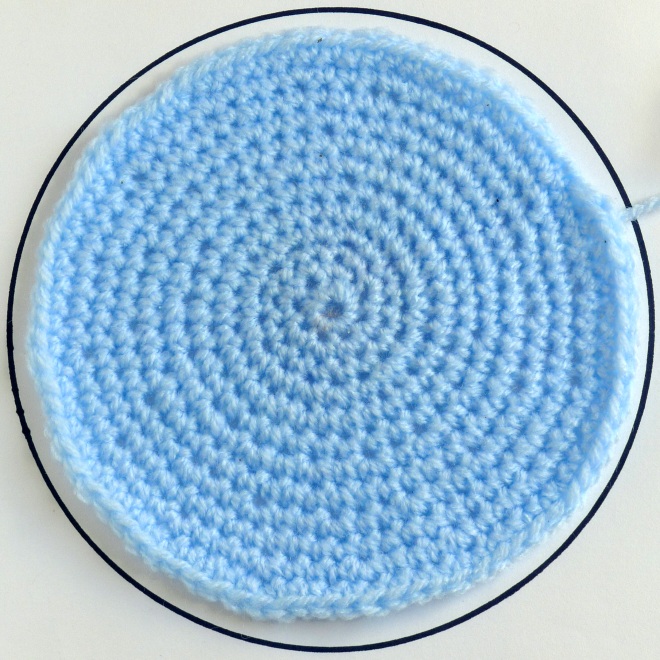 Ever since I created my African Violet pattern I have felt that I ought to work out how to crochet a proper circle using dcs (US-scs). When I made my violets I created a brown ‘circle’ to attach the leaves and flowers to that was meant to represent the potting compost in case it peeped through. However it came out as more of an octagon because of the way I had chosen to do the increases. Being an impatient soul, I couldn’t be bothered to work out how to do a perfect circle since it didn’t matter too much because it was hardly seen.
Ever since I created my African Violet pattern I have felt that I ought to work out how to crochet a proper circle using dcs (US-scs). When I made my violets I created a brown ‘circle’ to attach the leaves and flowers to that was meant to represent the potting compost in case it peeped through. However it came out as more of an octagon because of the way I had chosen to do the increases. Being an impatient soul, I couldn’t be bothered to work out how to do a perfect circle since it didn’t matter too much because it was hardly seen.
But finally I have got round to it!
Now there may be other ways to create an ‘almost’ perfect circle (claiming perfection is maybe a bit cheeky!) but this is my way.
Maybe, before the pattern, a little discussion about why I think this method gives a good circle.
After the second round all the increase rounds involve sixteen increases and a potential sixteen sided shape is obviously closer to a circle than an octagon. Also the inbetween rounds have one stitch into each of the previous round, thus giving a smooth finish. Lastly I have offset the increases sometimes having the 2dcs into one at the beginning and sometimes at the end of the sequence.
Circle Pattern
Starting with a magic loop or 4 chain circle and working in a spiral the rounds go like this for a circle with a diameter of about five inches or 13cm when working with DK yarn and a 4.5mm hook (that is probably 4mm for most people).
I marked the first stitch of each round after the first couple with a bit of thread, just to make it easier to see when the round was complete.
- ch1, 8dcs into circle. (8)
- 2dcs into each stitch. (16)
- 1dc into each stitch. (16)
- 2dcs into each stitch. (32)
- 1dc into each stitch. (32)
- 1dc into each stitch. (32)
- (2dcs into first stitch, 1dc into next) x 16. (48)
- 1dc into each stitch. (48)
- (1dc into each of first two stitches, 2dcs into third stitch) x 16. (64)
- 1dc into each stitch. (64)
- (2dcs into first stitch, 1dc into each of next three stitches) x 16. (80)
- 1dc into each stitch. (80)
To finish slip stitch into the next but one stitch or even better finish off as shown at the end of the post. (Next but one stitch, not next stitch, because this is a spiral not a joined round.)
To increase beyond this I would suggest keeping an eye on whether the circle is remaining flat. (If it ripples work an extra round of just single dcs) and mix up where the 2dc increases come in the sequence. I think just alternating between the start and end (as above) should be enough. Ending on a round with just single dcs should be best.
You can see what a good circle you get. (I drew round a bowl.)
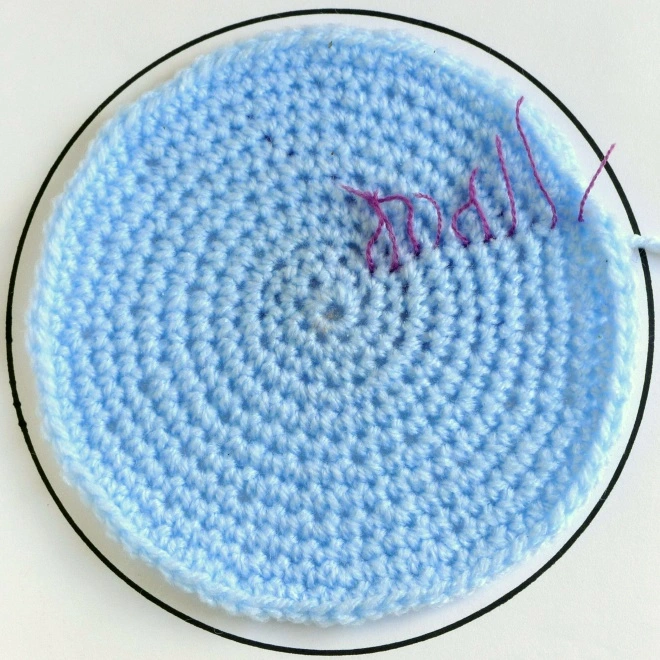
For anyone who has come here from my African Violet pattern – the number of rounds necessary to fill the top of a 9cm pot, which is what the pattern was designed for, is eight. This leaves you with 48 dcs on the last round. 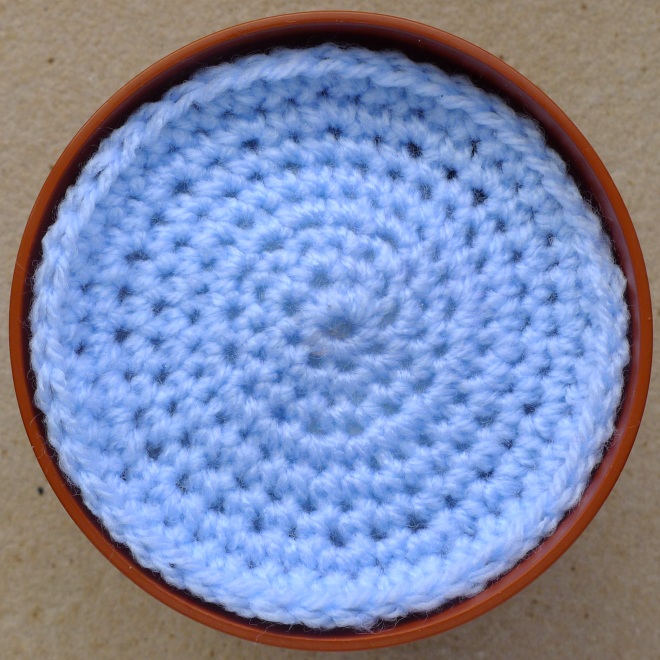
Now a little tip when completing your circle.
The neatest way to finish off is to pull the yarn that is left on the hook into a big loop and cut so as to leave enough to sew in. 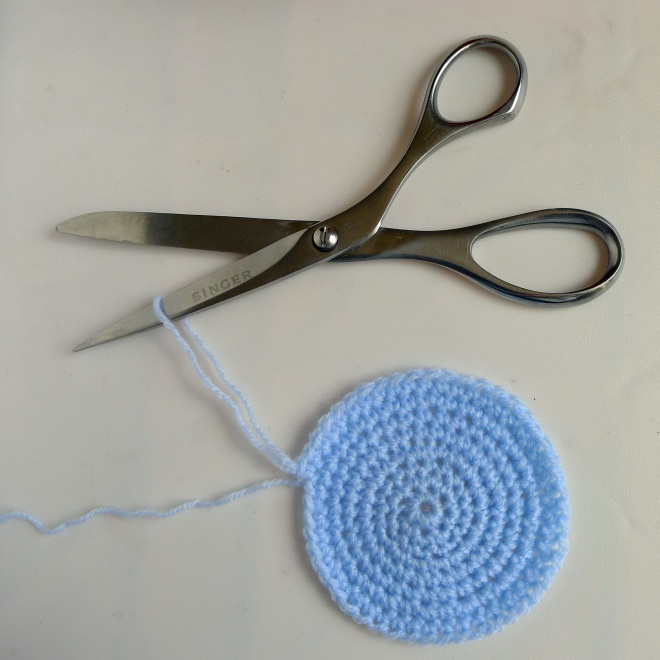 Thread the end into a needle and insert under the second stitch from the end. (Second stitch not next stitch).
Thread the end into a needle and insert under the second stitch from the end. (Second stitch not next stitch).
(Alternatively you can use a hook from the far side to pull the yarn through if you find it easier.)
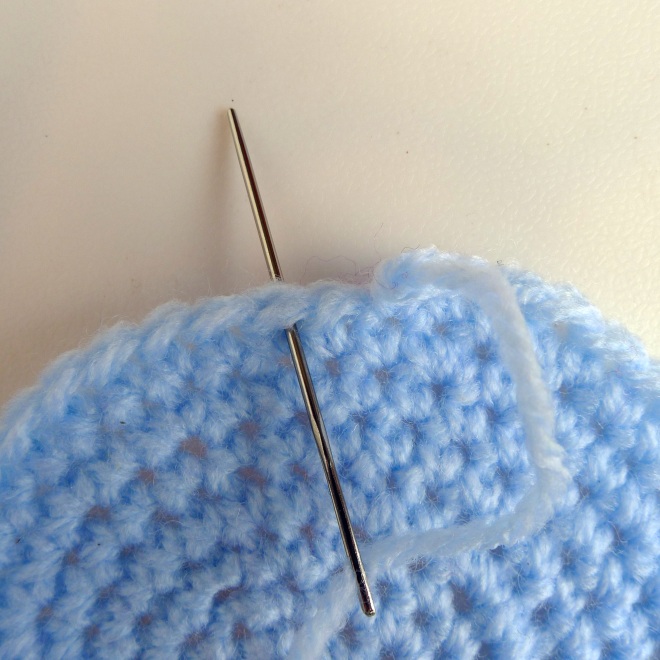 Pull through then thread the yarn back where it came out.
Pull through then thread the yarn back where it came out. 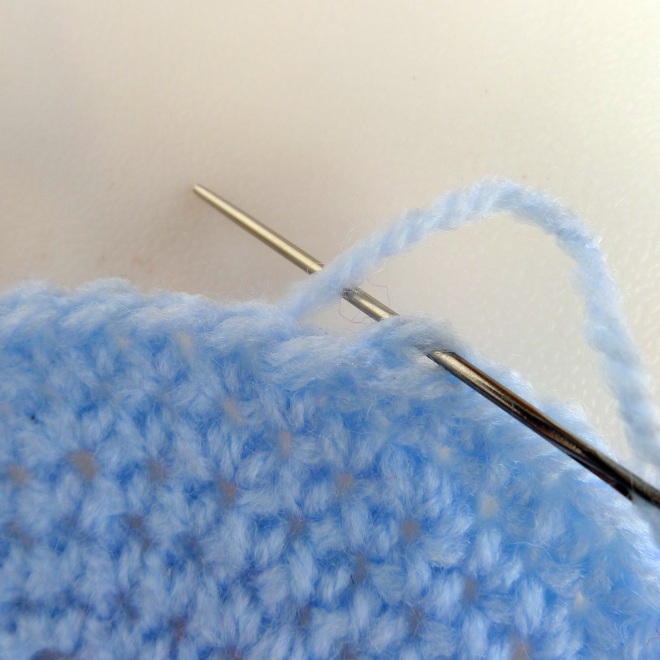 and finish off at the back.
and finish off at the back.
This gives a perfect looking edge. The needle is in under the loop we just made.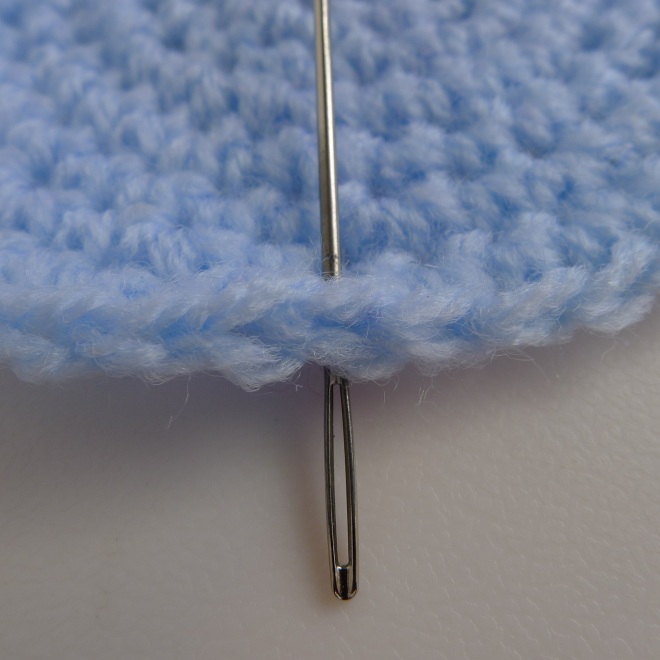 I find this a good way to finish of the final round of any crochet project I am making. (This last loop is the substitute for and worked over the loop of the first stitch.)
I find this a good way to finish of the final round of any crochet project I am making. (This last loop is the substitute for and worked over the loop of the first stitch.)
Thank you! I am definitely going to follow your instructions. Brilliant.
LikeLike
Glad you liked it!
LikeLike
Just making your circle – thanks again. This post could take its place amongst your Crochet Tutorials.
LikeLiked by 1 person
Hadn’t thought of that. I will have a look.
LikeLiked by 1 person
Great tutorial 😃 I did sit down and do the maths once, If you’re doing a large circle, to stop it rippling you also need to add an extra increase in every eighth round as pi is 3.14 not an exact 3!!
LikeLike
In this case I didn’t do any maths as I wasn’t sure what to use for a dc, I just noticed that the circle tended to be too big rather than too small the way I was doing it. I agree about what happens if you use pi as 3 as I did for my granny circle. I had someone who was making a really big one and ran into problems and I wasn’t sure if that was down to my approximation or something else.
LikeLiked by 1 person
Yes, I’m not sure on the dc maths but I know where to come next time I want a proper circle 😉
LikeLiked by 1 person
🙂
LikeLike
I can’t get this to lay flat at all & I try not to crochet tight…there no way this will lay flat after 3 rounds..what am I doing wrong?
LikeLiked by 1 person
This was just a quick post and written in UK terms though how it looks should tell you what the stitches are. Is it possible that you are using US dcs that in the UK are called trebles? There are more rather than less stitches to make the circle so where necessary they compress. I do crochet quite firmly which is why I suggested a smaller hook, possibly, for other people.
LikeLike
Thank you ~ very helpful information. It works perfectly!
LikeLiked by 1 person
Glad I could help. 🙂
LikeLike